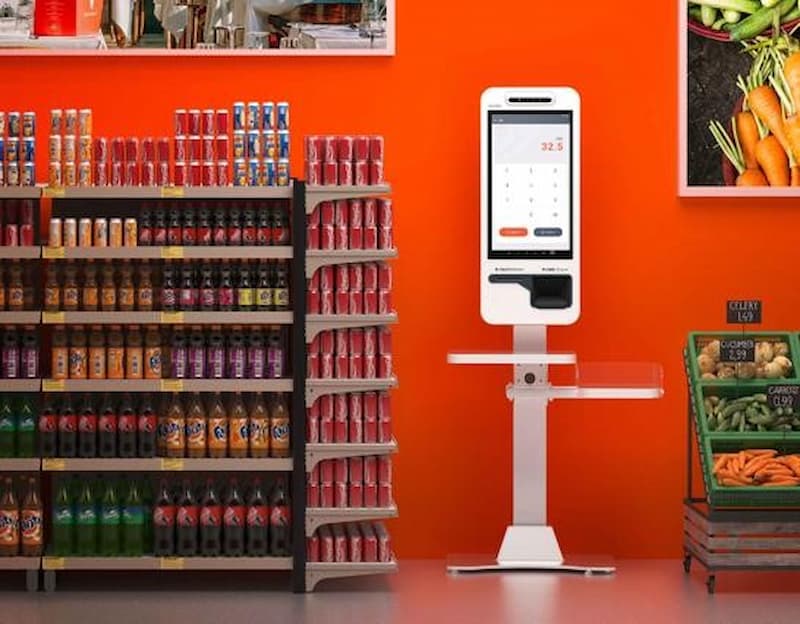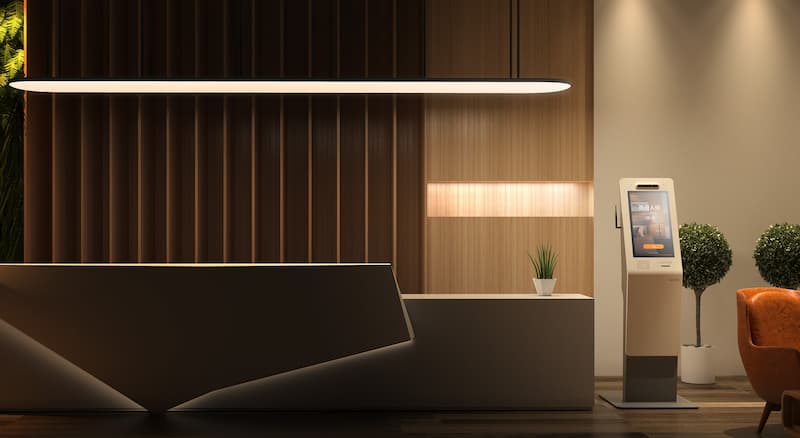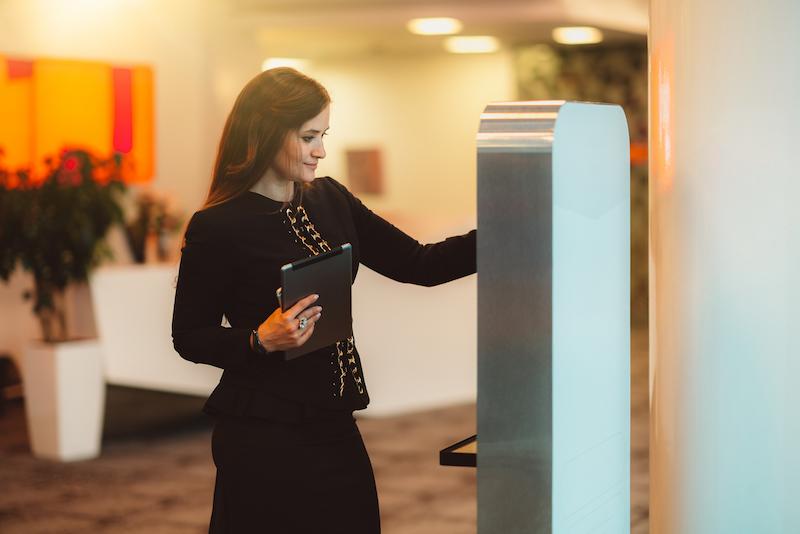Over the years, one consistent demand in commercial business is that there will always be a need for quick service. As a result, all customer-facing companies are looking for new ways to provide practical, accurate services as fast as possible. However, when a popular business faces increasing demand, it will be challenging to accommodate so many customers quickly.
The concept of self-service is prevalent in grocery stores and other retail locations, but fast-food hospitality struggled to find an alternative until smart kiosks. This blog shares how smart kiosks have risen to their position as a prominent tool for efficient self-service systems.

What Are Smart Kiosks?
Several attempts to develop this technology over the years have led to slow, unresponsive and easily damaged terminals. However, in recent years, technology has advanced enough to produce high-end self-serve smart Kiosks.
These stationary panels come with a large touch screen that is either mounted on a wall, set on a desktop or free-standing. They are designed to provide users with everything they may need in conventional customer interaction. In addition, they have advanced internal computers that will connect them to your business’s database and act as a self-sufficient, independent unit.
Smart kiosks are a unique blend of online eCommerce and physical brick-and-mortar locations. These units fulfil a specific need for customer-facing businesses to promote faster customer processing while simultaneously reducing operating costs.

Where Would You Find Smart Kiosks?
There are many locations where these digital terminals are used every day; for example:
- Fast-food businesses will install them to take customers’ orders, take payments and send the orders to the kitchen for service.
- Popular parking structures invest in these terminals to provide improved customer service.
- Hotels are choosing these self-service terminals to fulfil their guests’ check-ins and outs needs.
- Cinemas are using smart kiosks as retail stations allowing customers to buy tickets and snacks faster and not risk missing the start of a film due to long lines.
- Doctors’ surgeries use them to reduce the need for waiting at the desk to check in for an appointment.
- Schools use them to admit visitors, late arrivals and staff members, allowing for easy registration of those present within the school for safety and safeguarding requirements.
Any sector can take advantage of the benefits digital smart kiosks provide, but there are some sectors where they are more suited. Hospitality and retail are the most prominent sectors using these useful terminals. However, many non-commercial areas are exploring the benefits of these helpful machines for improved customer interactions. Some hospital wards, large shopping centres and airports are using them to provide an interactive map to help people find their destination more quickly.
Many units have also been adapted into a new form of advertising, digital signage. Moving images are always more noticeable than static, and many high-street stores will install a terminal without interactive capabilities to run attractive advertising and draw more customers.

Benefits of a Smart Kiosk
The main benefit of these computers is that they fulfil a need that usually exists because of too few staff. A lack of staff will always create longer wait times and frustrate customers, and these terminals eliminate that.
Smart kiosks provide a unique opportunity for businesses like retail, hotels and restaurants thanks to their self-service potential. Self-service is an effective way to improve customer engagement and wait times by reducing lines.
Customers are empowered to be proactive with their desired actions, reducing waiting frustration. Terminals will also significantly improve your business’s efficiency as fewer staff are needed to assist with a customer order, and more can be focussed on order fulfilment instead and complex enquiries.
Customizable technology
A smart kiosk can have several useful tools added to them to provide a complete customer experience. Card dispensers, scanners, barcode label printing and receipt printers are commonly chosen to turn the terminal into a payment station. There are additional advanced features available when choosing a digital smart kiosk from GSM Barcoding, such as:
- Integrated scanning and printing
- Face recognition and ID verification for payments
- EPOS transactions
Staff Upskilling
Smart Kiosks can compensate for the lack of staff or provide managers with the ability to up-skill their existing team members for more advantageous positions. In addition, automated equipment, such as a smart kiosk, is adept at fulfilling simple, predictable and repeated tasks. This will free up staff for more complex tasks that cannot be automated, such as stock rotations, sales pitches and other job roles that cannot be automated.
Up-skilling team members ensure you are using their skills to their full potential and provide them with greater impact and accomplishment within your daily operations.
Low Maintenance Solution
These independent units are durable pieces of technology that can be relied upon to fulfil thousands of orders with very little maintenance required. However, to make your regular maintenance even easier, you should invest in effective asset management software that will provide you with vital information on your terminal’s condition and plan for that next maintenance session.

A Growing Sector
Self-service technologies such as smart kiosks were slowly growing in popularity, but it wasn’t until recent years that they became commonplace. Some businesses feel that kiosks will be unwelcome in their store as the reduced human interaction will lead to a negative experience, but this is untrue. This misconception is related to customers’ initial inexperience with early versions of self-service. As new and improved systems like smart kiosks have been developed, customers’ technological familiarity. In fact, this adoption of smart kiosks has propelled the sector into a predicted compound annual growth rate (CAGR) of 5.45% globally every year.
SUNMI Digital Smart Kiosk Supplier
GSM Barcoding is excited to offer our customers an elite range of smart kiosks. The SUNMI self-serve smart kiosks we source are high-end choices that are reliable but adaptable to suit the specific needs of your business. Contact us to speak to one of our technical advisors about how these effective digital terminals will improve your business’s customer service.


















